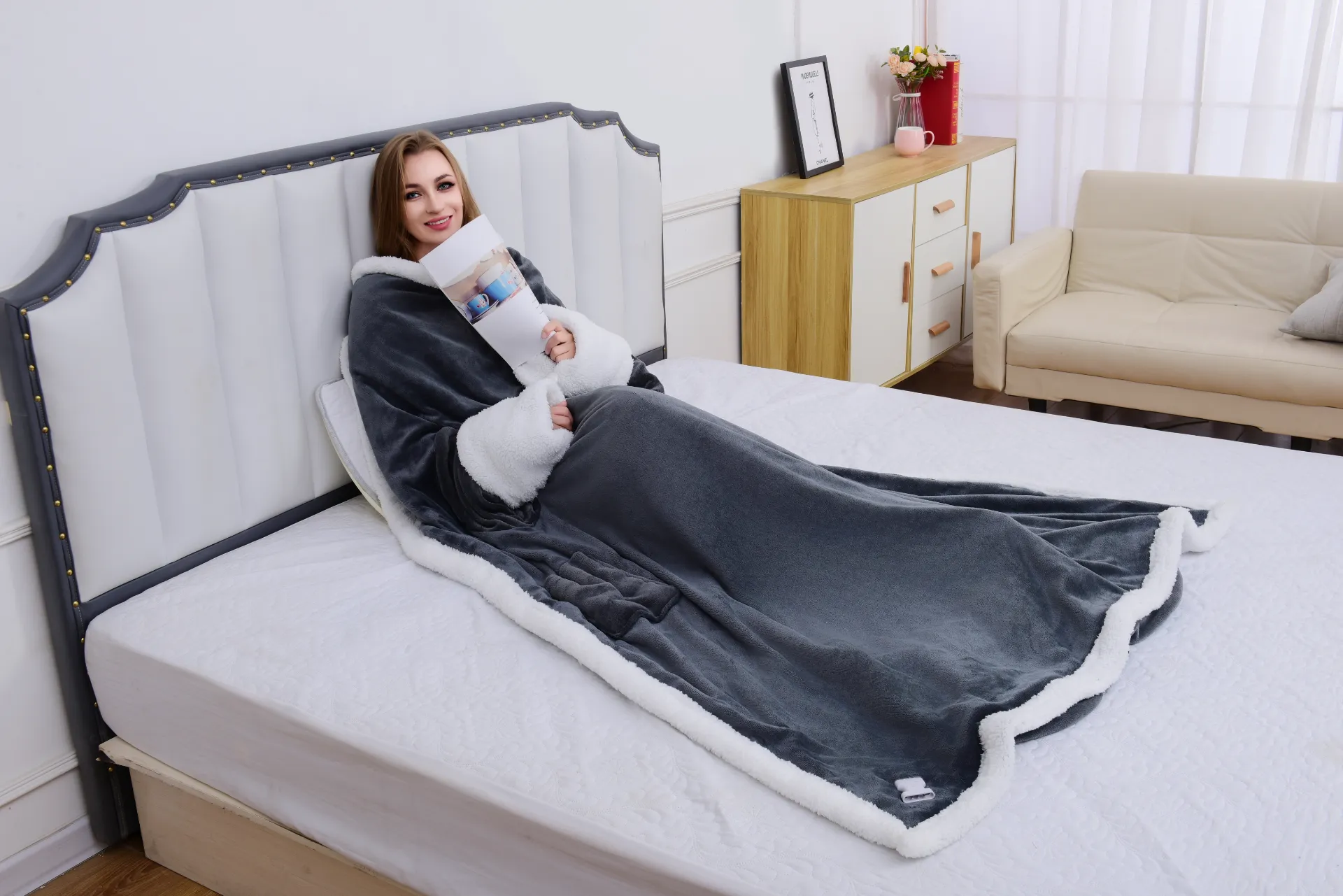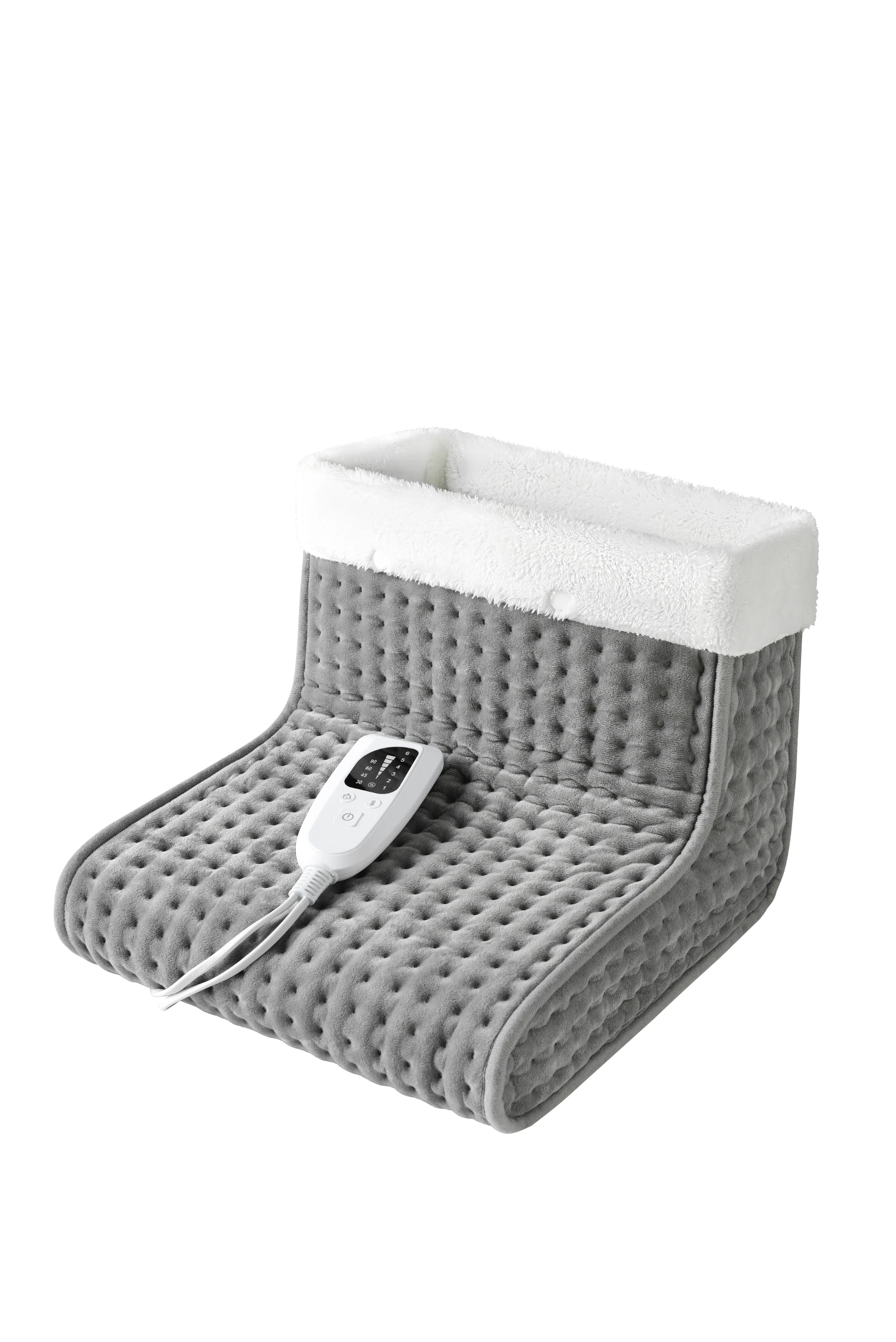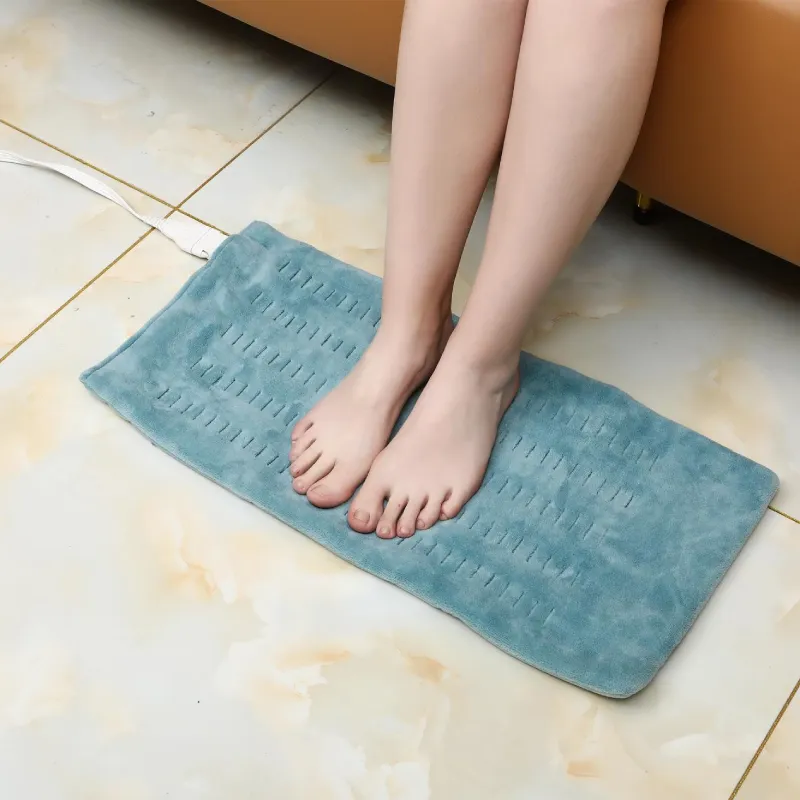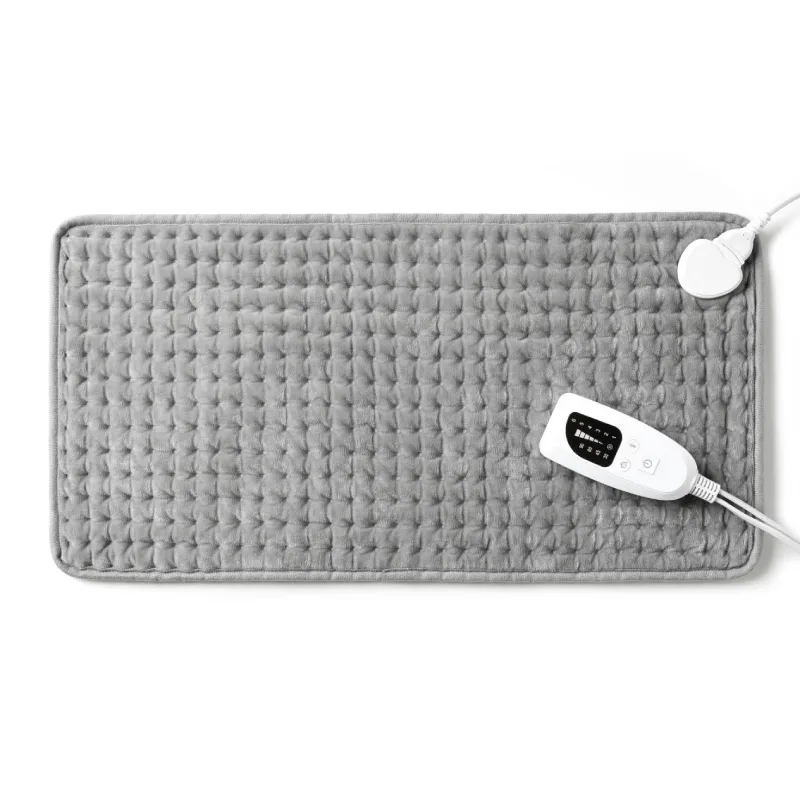
Jul . 07, 2025 04:53 Back to list
Best Heating Pad for Spine Pain Relief – Adjustable Temperature for Back Pain
- Introduction: Understanding Spine Pain and Targeted Relief
- The Science Behind Heat Therapy for Spine Pain
- Optimal Heating Pad Temperature for Back Pain
- Technological Innovations in Heating Pads
- Brand Performance Comparison
- Personalized Solutions and Custom Recommendations
- Real-World Use Cases: Heating Pad for Spine Pain Success Stories

(heating pad for spine pain)
Introduction: The Impact of Spine Pain and Heating Pad Solutions
Spine pain is a leading cause of disability worldwide, affecting up to 80% of adults at some point in their lives. This chronic issue significantly disrupts daily activities and work productivity. Traditional relief strategies include medication, physical therapy, and rest; however, the heating pad for spine pain
has emerged as a non-invasive, drug-free, and accessible solution. By delivering consistent warmth, heating pads target muscular stiffness and promote localized circulation, directly addressing the discomfort associated with lower back pain and other spinal conditions.
The effectiveness of heating pads is reinforced by medical research, with a 2019 study published in the "Journal of Clinical Rehabilitation" noting that 72% of participants experienced notable relief from chronic spinal discomfort when using heat therapy compared to conventional rest. Given its convenience and proven outcomes, the demand for advanced heating pad solutions continues to rise, emphasizing the need for informed product selection tailored to individual needs.
The Science Behind Heat Therapy for Spine Pain
Understanding how heat therapy alleviates back pain is crucial to its application. Heat facilitates vasodilation, increasing blood flow to the affected area, which helps deliver oxygen and nutrients while flushing away metabolic waste. This chemical response aids in reducing muscle spasms, stiffness, and joint discomfort common in spinal pain.
In clinical settings, superficial heat therapy is often prescribed for nonspecific lower back pain, as it not only accelerates soft tissue recovery but also activates thermoreceptors to inhibit the transmission of pain signals to the brain (gate control theory). Results from peer-reviewed studies illustrate that applying heat to the lumbar region for at least 15-30 minutes results in a 45% greater reduction in reported pain scores compared to untreated groups. As more consumers seek non-pharmacological approaches, these findings underscore why heating pads are a mainstay in both home and professional rehabilitation settings.
Optimal Heating Pad Temperature for Back Pain
Determining the heating pad temperature for back pain is essential for achieving therapeutic benefits while ensuring user safety. Medical experts typically recommend a surface temperature range between 104°F to 113°F (40°C to 45°C) for heat therapy. Excessive heat can cause burns or exacerbate inflammation, while insufficient heat may not deliver the desired muscle relaxation.
Modern heating pads feature precision thermostats and multiple heat settings, allowing users to select their ideal temperature. Research from the National Institutes of Health suggests that maintaining a target of 110°F (43°C) yields optimal muscular relaxation and pain attenuation. For sensitive individuals or those with decreased skin sensation (e.g., due to neuropathy or age), it is advised to stay at the lower end of the recommended temperature range and use protective layers between the skin and the pad.
Technological Innovations in Heating Pads
Recent advancements in heating pad technology have dramatically improved efficacy, safety, and user experience. Traditional electric pads have been retrofitted with features like automatic shut-off, rapid preheat, moist heat options, and ultra-flexible heating elements for contoured fit along the spine. Some high-end models use carbon fiber heating—ensuring uniform temperature distribution and energy efficiency—while others incorporate smart sensors to adaptively regulate temperature based on feedback.
Additionally, wearable heating pads are gaining traction. These wraparound designs integrate rechargeable batteries and adjustable Velcro straps, providing users with the freedom to move without compromising therapeutic contact. For clinical or home users seeking enhanced mobility, these wireless pads are a game changer. Furthermore, digital controls and mobile app integration now allow for personalized routines, timer settings, and data tracking to optimize long-term spinal care.
Brand Performance Comparison
| Brand | Heating Technology | Temperature Range (°F) | Heat-Up Time (min) | Key Features | Average User Rating (5.0) | Price (USD) |
|---|---|---|---|---|---|---|
| Sunbeam XpressHeat | Electric, Carbon Fiber | 110 – 115 | 1 | Rapid preheat, Moist/Dry, Auto shut-off | 4.7 | 45 |
| ThermaCare Pro | Infrared, Wearable | 105 – 112 | 2 | Wireless, Flexible straps, Rechargeable | 4.6 | 68 |
| PureRelief XL | Electric, Microplush | 104 – 113 | 4 | 6 heat settings, Machine washable | 4.8 | 54 |
| Utaxo Heating Pad | Electric, Graphene | 104 – 113 | 3 | Memory function, Moist heat, Extended cord | 4.5 | 36 |
The above comparison reveals that while all brands operate within the recommended heating pad temperature for back pain, features such as rapid preheat technology, wireless capability, or machine washable covers set premium models apart. User ratings also indicate high satisfaction with pads offering moist heat and flexible design specifically tailored for spine pain relief.
Personalized Solutions and Custom Recommendations
Every individual experiences spinal discomfort differently, whether it’s chronic lower back tension from sedentary work, rehabilitation after a sports injury, or postural strain. Selecting the right heating pad on lower back pain entails considering one’s lifestyle, pain frequency, and sensitivity.
- For daily, mild pain: A simple electric pad with adjustable settings and automatic shut-off suffices.
- For chronic, severe pain: A premium model with rapid preheating, moist heat option, and ergonomic design may offer superior results.
- For active users: Wireless, rechargeable, or wearable pads allow for relief during movement or travel.
- For elderly or sensitive skin: Pads offering lower temperatures, timer functions, and plush covers minimize risk of burns while providing comfort.
Consulting healthcare professionals can further personalize recommendations, ensuring safe and effective usage based on medical history and specific anatomical needs. Monitoring for any adverse effects during use—such as increased pain or skin irritation—is vital, emphasizing the importance of selecting reputable brands and following usage guidelines meticulously.
Real-World Use Cases: Heating Pad for Spine Pain Success Stories
Incorporating a heating pad for spine pain into a daily routine has yielded remarkable improvements for countless users. Consider Jane, a corporate professional suffering from persistent lower back pain due to extended hours at her desk. By using a microplush heating pad at 110°F for 20 minutes every evening, paired with basic stretches, she saw a 60% reduction in discomfort scores over six weeks.
For athletes like Mike, recovering from a lumbar strain, a wireless, form-fitting heating pad enabled him to maintain mobility during the day without interrupting occupational activities. His recovery time was reduced by 30% compared to previous injuries where only rest and cold therapy were applied. Elderly patients with restricted mobility have also benefitted: a survey of 200 individuals aged 65+ reported a 78% satisfaction rate using low-temperature, auto-shutoff pads for nightly spine relief.
These diverse applications demonstrate the versatility of heating pads, underscoring their role as both a primary and adjunct therapy in comprehensive back pain management. As more users share their positive outcomes, the popularity and refinement of these devices are expected to advance further, driving innovation for even more tailored solutions.

(heating pad for spine pain)
FAQS on heating pad for spine pain
Q: What is the best type of heating pad for spine pain?
A: The best heating pad for spine pain is typically a large, flexible electric heating pad that covers the entire spine area. Look for pads with adjustable heat settings and auto shut-off features. These options help target pain and improve safety.Q: How long should I use a heating pad on lower back pain?
A: It is generally recommended to use a heating pad on your lower back pain for 15 to 20 minutes at a time. Avoid exceeding 30 minutes to prevent skin burns or irritation. Always allow your skin to cool between sessions.Q: What temperature should a heating pad be for back pain relief?
A: A moderate temperature of around 104°F to 113°F (40°C to 45°C) is typically effective for back pain relief. Make sure the heating pad feels warm, not hot, to avoid skin damage. Always start at the lowest setting and adjust as needed.Q: Can I sleep with a heating pad on my spine overnight?
A: It is not recommended to sleep with a heating pad on your spine overnight due to the risk of burns or fire hazards. Use it while awake and attentive. Always follow the manufacturer's safety instructions.Q: Is a heating pad effective for treating chronic back pain?
A: Yes, heating pads can provide temporary relief for chronic back pain by improving blood flow and relaxing muscles. However, they should be used as part of a broader pain management plan. Consult a healthcare professional for long-term treatment options.-
Innovations and Applications of Modern Electric Heating Blankets
Jul.07,2025
-
Innovations and Applications of Electric Fleece Blanket Systems
Jul.07,2025
-
Functional and Cozy Solutions for Personalized Warmth
Jul.07,2025
-
Essential Comfort and Warmth Solutions: Heated Blanket Variants
Jul.07,2025
-
Enhancing Coziness with Warmth - Centric Blanket Solutions
Jul.07,2025
-
Enhancing Comfort and Warmth: Electric Blanket Solutions
Jul.07,2025
Realted Products



